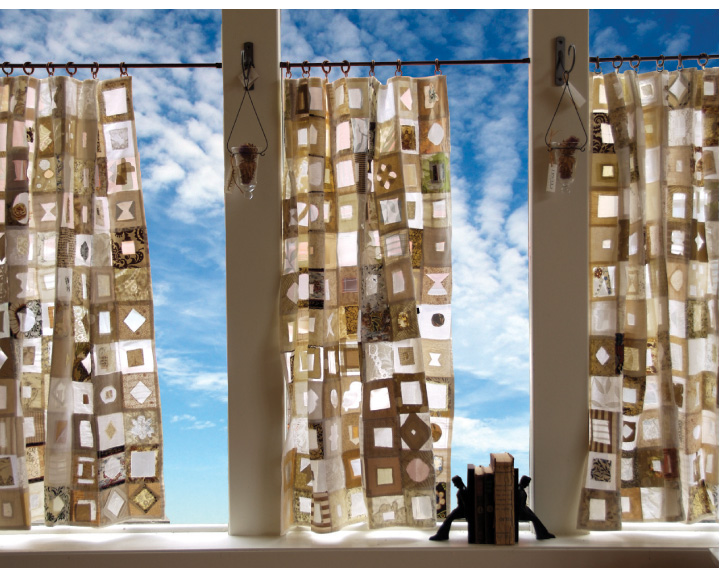
When Tom Cantwell bought a sewing machine, he had no idea that it would lead to turning leftover and vintage fabrics into one-of-a-kind curtains. “I got a sewing machine about a year and a half ago to become a little more effective on the home front,” he says. “Specifically, I wanted to make curtains and rag rugs. I worked at Rejuvenation, and we had a lot of nice fabric samples that I was able to recycle rather than send to a landfill.”
Now he seeks out fabrics in all sorts of places. “I’ve been scouring estate sales and junk shops for vintage curtains and lace,” he says. “It’s amazing what you can find at those places. What I like about working with fabric is that it’s malleable and there’s so much you can do with it. It’s a collage material, and it’s a medium that’s got a lot of change to it.”
Cantwell, a Pacific Northwest native who studied environmental design at the University of Washington in Seattle, spent a quarter studying in Rome. “I think there’s a little bit of architectural reverence for stained glass windows in a lot of my work,” he says.
He begins his designs based on the dimensions of the curtain, and most of his pieces are custom-made. When he works with clients, they often bring him bits of fabrics to use. “I work with people on their needs. It’s the complete opposite of the assembly line,” he says. “I like the curtains to be transparent, but sometimes people want to work their old Hawaiian shirts in the pattern.”
For Cantwell, the curtain is an integral part of the window and what’s beyond the window. “I like the interaction with the landscape, and how it’s sort of a transparent eyelid that’s not excluding the light and the garden outside,” he says. The 40-inch by 48-inch curtain panels (above) cost $300 per panel and can be found at Hovel (4000 N. Mississippi Ave., 503-280-4842) in Portland. The prices of his panels vary depending on the job.
Contact custom curtainmaker Tom Cantwell at [email protected].




